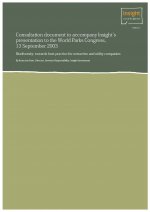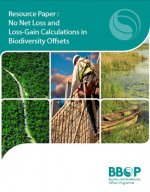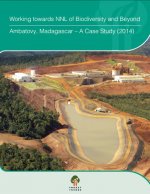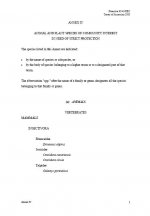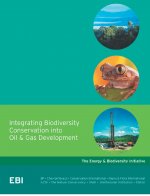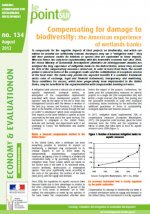Consultation Document to Accompany Insight’s Presentation to the World Parks Congress, 13 September 2003 Biodiversity: Towards Best Practice for Extractive and Utility Companies
Kerry ten KateHuman activities are making an increasing impact on the integrity of ecosystems that provide essential resources and services for human well-being and economic activities. In particular, biodiversity2 is being lost at an unprecedented rate,3 while global population and consumption are growing4. This presents a risk both to business and to society more broadly.
Resource Paper: No Net Loss and Loss-Gain Calculations in Biodiversity Offsets
Toby Gardner, Amrei von Hase - BBOPThis document is one of two Resource Papers (the other is on Limits to What Can Be Offset) written to update and complement information already published in the Offset Design Handbook (BBOP, 2009) and to support the interpretation and understanding of the Principles, Criteria and Indicators being developed for the BBOP Standard on Biodiversity Offsets […]
Working towards NNL of Biodiversity and Beyond Ambatovy, Madagascar
A Case Study (2014)
Amrei von Hase, Andrew Cooke, Aristide Andrianarimisa, Rivolala Andriamparany, Vanessa Mass, Robin Mitchell, Kerry ten Kate - Forest Trends, Ambatovy, Wildlife Conservation Society, Ambatovy, Ambatovy, The Biodiversity Consultancy, Forest TrendsAmbatovy joined the Business and Biodiversity Offsets Programme (BBOP) in 2006 as a pilot project. In 2009, Ambatovy, together with BBOP, published a case study on the companys biodiversity management and offset work up to that point (available at https://www.forest-trends.org/documents/fi les/doc_3118.pdf). The present document serves as an update on Ambatovys progress achieved since then and […]
Integrating invasive mammal eradications and biodiversity offsets for fisheries bycatch: conservation opportunities and challenges for seabirds and sea turtles
C. Josh Donlan, Chris Wilcox - Biol Invasions, Biol InvasionsThe removal of invasive mammals from islands is one of societys most powerful tools for preventing extinctions and restoring ecosystems. Given the demonstrable high conservation impact and return on investment of eradications, new networks are needed to fully leverage invasive mammal eradications programs for biodiversity conservation at-large. There have been over 800 invasive mammal eradications […]
Native Vegetation Act 2003 No 103
Government of AustraliaAn Act relating to the sustainable management and conservation of native vegetation; to repeal the Native Vegetation Conservation Act 1997; and for other purposes. [Assented to 11 December 2003]
Council Directive 92/43/EEC of 21 May 1992 on the Conservation of Natural Habitats of Wild Fauna and Flora: Annex IV
European UnionThe species listed in this Annex are indicated: by the name of species or subspecies, or by the body of species belonging to a higher taxon or to a designated part of that taxon.
New Regulations could mean Big Business for US Mitigation Bankers?
Ricardo BayonJohn Ryan, the President of Land and Water Resources Inc. in Chicago, Illinois, is the perfect example of how environmental markets are transforming the way people do business in the US. In Ryan’s particular case, not only has his business been radically transformed, but so has his life, his career, and even his legacy.
Integrating Biodiversity Conservation into Oil and Gas Development
The Energy and Biodiversity InstituteIncreasingly, areas of interest for oil and gas development are also being recognized and valued for their biodiversity resources. Biodiversity, the complex web of genes, species, ecosystems and ecological processes that sustain life on Earth, provides human society with food, medicines, natural resources, ecological services and spiritual and aesthetic benefits. Yet, this biodiversity is under […]
THE USE OF MARKET-BASED INSTRUMENTS FOR BIODIVERSITY PROTECTION THE CASE OF HABITAT BANKING
Summary Report for European Commission DG Environment
EXECUTIVE SUMMARY: This is the summary report of the consortium led by Economics For The Environment Consultancy Ltd (eftec) and the Institute for European Environmental Policy (IEEP) for the contract for European Commission Directorate-General Environment on The Use of Market-based Instrument for Biodiversity Protection the case of habitat banking (ENV.G.1/ETU/2008/0043).
Compensating for damage to biodiversity
the American experience of wetlands banks
Review of the US experience with wetlands banking


